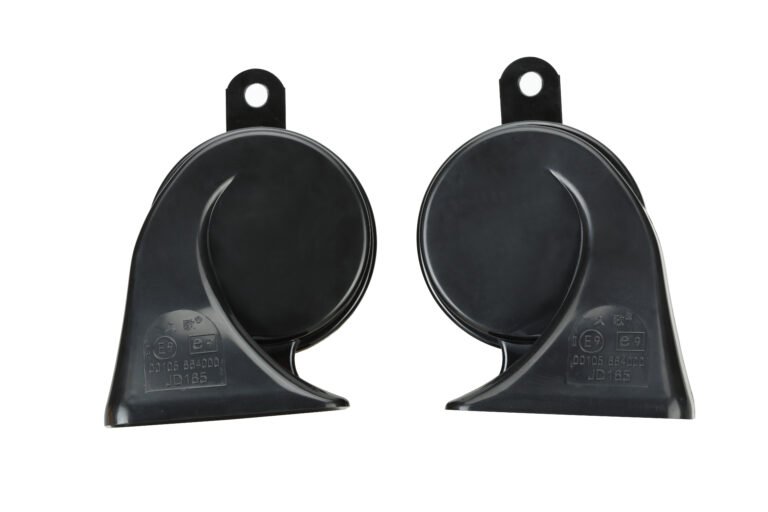The vehicle horn is an essential safety feature in automobiles, yet many overlook the mechanisms that allow it to function properly. A malfunctioning horn can pose serious risks, especially in emergency situations. If your horn fails to activate when needed, it could lead to missed warnings, accidents, and unnecessary stress. Understanding the different components that control the horn's operation can help prevent these issues. In this article, we'll break down each part of the horn system to ensure you're well-informed.
Various components must work to activate the horn on your vehicle. You cannot isolate power to the horn circuit because you have to consider the battery, the switch, the relay, the fuse, the ECU, and so on. Just like with your hand inside the machine, you need to understand the control mechanisms.
As we sojourn deeper into the details of the horn’s activation, we draw near an understanding of the function of each part. Let’s talk about what each part does and how it helps you beep your horn at those who only need to get beeped at, when they need complete silence.
The Horn Switch: The Primary Control Mechanism
The switch for our horn is generally found on the end of our steering wheel. That’s our primary control mechanism. It’s tied into the electrical circuit on our vehicle. When we push it, we close the circuit, and we get the signal that makes our horn beep. The horn button is nothing more than a boring, old, run- of- the- mill, push- button switch. But it’s the switch that completes the circuit to make the horn beep.
The switch is tied into the steering wheel set of controls but is still readily available for the driver. You want a switch you can slam, and it instantly creates a short to beep your horn. You don’t want any kind of delay in those critical situations. If the switch shorts open or closed, your horn won’t beep, and you’ll be in big trouble.
The Role of the Car Battery in Horn Activation
The battery supplies the voltage and current required to beep your horn. The horn energizes itself with electricity from the battery.
A shitty battery will provide shitty voltage and/or current. A bad battery can mean a piss-poor horn or inconsistent horn operation. If your horn isn’t working, one of the first things to check is your battery. By maintaining your battery, you make sure it has the ability to provide electricity to your horn on demand.
The Steering Wheel Control System
There’s a steering wheel. It’s got an integrated horn switch, which is also conveniently located where we put our hands. The steering wheel has the integrated control switch for the horn. When you push the switch on the steering wheel, it sends power to the horn.
The buttons on the steering wheel are not only for the horn. They also integrate into the airbag system, cruise control, and audio system for the rest of the car. It is very highly coordinated with the car’s CAN network. If this switch system goes bad, not only your horn but also the entire steering wheel and airbag system integration go bye-bye. Therefore, it’s but one of the many things to maintain on your vehicle.
The Role of the Relay in the Horn System
The relay in the horn system serves as a switch that controls the flow of electrical power to the horn. The relay acts as a bridge between the horn switch and the horn itself. When the horn switch is activated, the relay receives the signal and completes the circuit by allowing current to pass through to the horn. This helps regulate the power sent to the horn, ensuring that it operates at the correct voltage.
Problems with the relay can cause the horn to not work at all—meaning it may not work all the time or take a moment to work. But, as a general rule, when the relay is bad, the horn isn’t going to be right.
The Fuse: Safety Control for the Vehicle Horn
The main thing to remember is the fuse protects your circuit so that the wiring in your car doesn’t short out and burn the car down. But now also realize if you blow the horn for long enough and quickly enough, you can blow the fuse in your car and your horn will be broken.
You will find the horn fuse in the fuse box. You need to check that. If it’s broken, you can replace that fuse. However, before you replace it and blow it again, you need to find out why you blew the fuse in the first place.
The Vehicle's Grounding System
The vehicle’s grounding system serves as the return path for the electrical current that powers the horn. Grounding helps complete the electrical circuit and ensures proper flow of current. If the vehicle’s grounding system is faulty or disconnected, it can cause the horn to malfunction or fail entirely.
A weak or poor grounding connection can make your horn act weird. It can make a weak sound or lose connection. Maintenance is needed to make sure everything is still connecting the way it should. Sometimes your horn needs a good cleaning and a good ground. This makes sure that your horn runs on time.
The Electronic Control Unit (ECU) and Its Function
The Electronic Control Unit (ECU) is the car’s central computer – essentially the car’s brain – and is responsible for controlling many of the electronic systems, including the horn circuit. In modern vehicles, the ECU is much more involved in managing the activation and deactivation of the horn. The ECU receives inputs from multiple sources, such as the horn switch or the switch in the steering wheel, and it takes that data and does the calculations to sound the horn.
The ECU will also monitor the health of the electrical circuits related to the vehicle and the horn. It can send you signals and warnings about the overall health of the system and if there are malfunctions, including low voltage or a circuit fault. An affair with the ECU can cause the horn to not work at all or do funny things, so you’ll want to check that out.
How the Horn's Sound is Triggered
The sound of the vehicle's horn is created by the vibration of a diaphragm inside the horn. When electrical current flows through the horn circuit, it energizes an electromagnet, causing it to attract and release the diaphragm. This rapid vibration creates sound waves, which produce the honking noise associated with the horn.
For a horn to make a beep, it depends on the design of the diaphragm and the electromagnetic. The design of them and the electrical signal they get produce the beep. When the beep quits, the electromagnet and diaphragm stop vibrating.
Conclusion
Once you understand all the ways that you can control a horn, you soon learn that the horn switch, the battery, the relay, the fuse, the steering wheel, the ECU, and the ground all work together to make it honk. Taking care of those things and maintaining them is what will keep the horn working when you need it.


